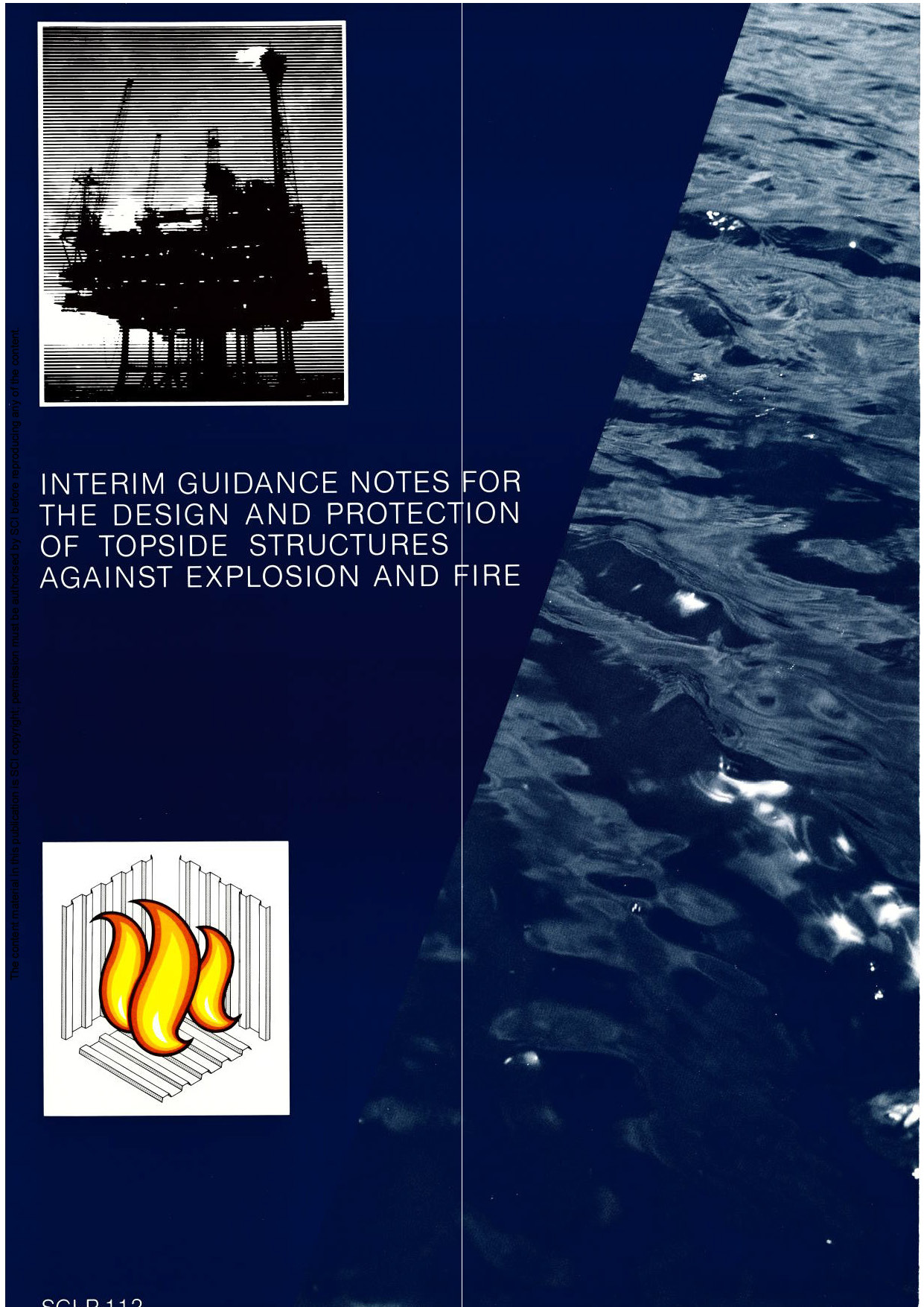Interim Guidance Notes
Interim Guidance Notes for the Design and Protection of Topside Structures against Explosion and Fire

FABIG Members: Log-in to access all FABIG resources LOG IN
SUMMARY
IMPORTANT NOTE: Section 4 of the Interim Guidance Notes has now been superseded by Technical Note 13
The 'Interim Guidance Notes for the Design and Protection of Topsides Structures against Explosion and Fire' were issued upon completion of Phase I of the JIP on Blast and Fire Engineering for Topside Structures (BFETS Phase I). These guidelines are based on the state-of-the-art knowledge in 1991 as documented in the 26 work package reports produced by the BFETS Phase I. They form a reference framework for the design and protection of topside structures against explosion and fire and have been for many years a key reference within the Oil & Gas industry.
These guidelines are called interim because of the important deficiencies identified in fire & explosion knowledge back in 1991 and because they apply to fast changing design concepts. Since the publication of the IGN in 1992, FABIG Technical Notes have been issued to bridge the identified gaps in knowledge and supplement the information provided in the IGN.
TABLE OF CONTENTS
ACKNOWLEDGEMENTS
HOW TO USE THIS DOCUMENT
FOREWORD
- INTRODUCTION
- Objectives
- Scope and limitations of this document
- Background philosophy
- Introduction to explosion and fire hazards
- DESIGN AND ASSESSMENT PHILOSOPHY
- Introduction
- Safety assessment
- Design and protection philosophy
- Platform and module design
- Risks to personnel
- DESIGN GUIDANCE FOR EXPLOSION RESISTANCE
- Introduction
- Explosion scenarios
- Blast loads due to explosions
- Mitigation of explosion effects
- Structural resistance
- Projectiles
- DESIGN GUIDANCE FOR FIRE RESISTANCE
- Introduction
- Fire scenarios
- Determination of heat flux loadings
- Determination of component temperatures
- Passive and active fire protection systems
- Response to fire effects
- INTEGRATED DESIGN STRATEGY FOR EXPLOSION AND FIRE
- Introduction
- Explosion and fire interaction
- Safety conflicts
- Suggested design strategy
- Suggested structural design practices
- GFRP, aluminium, stainless steel and concrete
REFERENCES
ABBREVIATIONS
DEFINITIONS
Online purchase options:
Non-Members of FABIG are able to purchase PDF copies of the FABIG Technical Guidance documents.